The International System of Units Its History and Use in Science and Industry by Robert A. Nelson On September 23, 1999 the Mars Climate Orbiter was lost during an orbit injection maneuver when the spacecraft crashed onto the surface of Mars. The principal cause of the mishap was traced to a thruster calibration table, in […]
The International System of Units
Its History and Use in Science and Industry
by Robert A. Nelson
On September 23, 1999 the Mars Climate Orbiter was lost during an orbit injection maneuver when the spacecraft crashed onto the surface of Mars. The principal cause of the mishap was traced to a thruster calibration table, in which British units instead of metric units were used. The software for celestial navigation at the Jet Propulsion Laboratory expected the thruster impulse data to be expressed in newton seconds, but Lockheed Martin Astronautics in Denver, which built the orbiter, provided the values in pound-force seconds, causing the impulse to be interpreted as roughly one-fourth its actual value.
The Mars spacecraft incident renews a controversy that has existed in the United States since the beginning of the space program regarding the use of metric or British units of measurement. To put the issue into perspective, this article reviews the history of the metric system and its modern version, the International System of Units (SI). The origin and evolution of the metric units, and the role they have played in the United States, will be summarized. Technical details and definitions will be provided for reference. Finally, the use of metric units in the satellite industry will be examined.
ORIGIN OF THE METRIC SYSTEM
The metric system was one of many reforms introduced in France during the period between 1789 and 1799, known as the French Revolution. The need for reform in the system of weights and measures, as in other affairs, had long been recognized. No other aspect of applied science affects the course of human activity so directly and universally.
Prior to the metric system, there had existed in France a disorderly variety of measures, such as for length, volume, or mass, that were arbitrary in size and variable from one town to the next. In Paris the unit of length was the
Pied de Roi and the unit of mass was the
Livre poids de marc. These units could be traced back to Charlemagne. However, all attempts to impose the “Parisian” units on the whole country were fruitless, as they were opposed by the guilds and nobles who benefited from the confusion.
The advocates of reform sought to guarantee the uniformity and permanence of the units of measure by taking them from properties derived from nature. In 1670, the abbe Gabriel Mouton of Lyons proposed a unit of length equal to one minute of arc on the earth’s surface, which he divided into decimal fractions. He suggested a pendulum of specified period as a means of preserving one of these submultiples.
The conditions required for the creation of a new measurement system were made possible by the French Revolution, an event that was initially provoked by a national financial crisis. In 1787 King Louis XVI convened the Estates General, an institution that had last met in 1614, for the purpose of imposing new taxes to avert a state of bankruptcy. As they assembled in 1789, the commoners, representing the Third Estate, declared themselves to be the only legitimate representatives of the people, and succeeded in having the clergy and nobility join them in the formation of the National Assembly. Over the next two years, they drafted a new constitution.
In 1790, Charles-Maurice de Talleyrand, Bishop of Autun, presented to the National Assembly a plan to devise a system of units based on the length of a pendulum beating seconds at latitude 45. The new order was envisioned as an “enterprise whose result should belong some day to the whole world.” He sought, but failed to obtain, the collaboration of England, which was concurrently considering a similar proposal by Sir John Riggs Miller.
The two founding principles were that the system would be based on scientific observation and that it would be a decimal system. A distinguished commission of the French Academy of Sciences, including J. L. Lagrange and Pierre Simon Laplace, considered the unit of length. Rejecting the seconds pendulum as insufficiently precise, the commission defined the unit, given the name metre in 1793, as one ten millionth of a quarter of the earth’s meridian passing through Paris. The proposal was accepted by the National Assembly on March 26, 1791.
The definition of the meter reflected the extensive interest of French scientists in the figure of the earth. Surveys in Lapland by Maupertuis in 1736 and in France by LaCaille in 1740 had refined the value of the earth’s radius and established definitively that the shape of the earth is oblate. To determine the length of the meter, a new survey was conducted by the astronomers Jean Baptiste Delambre and P.F.A. Mechain between Dunkirk, in France on the English Channel, and Barcelona, Spain, on the coast of the Mediterranean Sea. This work was begun in 1792 and completed in 1798, enduring the hardships of the “reign of terror” and the turmoil of revolution. We now know that the quadrant of the earth is 10 001 957 meters instead of exactly 10 000 000 meters as originally planned. The principal source of error was the assumed value of the earth’s flattening used in correcting for oblateness.
The unit of volume, the pinte (later renamed the litre), was defined as the volume of a cube having a side equal to one-tenth of a meter. The unit of mass, the grave (later renamed the kilogramme), was defined as the mass of one pinte of distilled water at the temperature of melting ice. In addition, the centigrade scale for temperature was adopted, with fixed points at 0 C and 100 C representing the freezing and boiling points of water (now replaced by the Celsius scale).
The work to determine the unit of mass was begun by Lavoisier and Hauy and was completed by Gineau and Fabbroni. They discovered that the maximum density of water occurs at 4 C, and not at 0 C as had been supposed, so the definition of the kilogram was amended to specify the temperature of maximum density. We now know that the intended mass was 0.999972 kg, i.e., 1000.028 cm
3 instead of exactly 1000 cm
3 for the volume of 1 kilogram of pure water at 4 C.
On August 1, 1793 the National Convention, which by then ruled France, issued a decree adopting the preliminary definitions and terms. The “methodical” nomenclature, specifying fractions and multiples of the units by Latin prefixes, was chosen in favor of the “common” nomenclature, involving separate names.
A new calendar was also introduced in September, 1793. Its origin was designated retroactively as September 22, 1792 to commemorate the overthrow of the monarchy and the inception of the Republic of France. The French Revolutionary Calendar consisted of twelve months of thirty days each, concluded by a five or six day holiday. The months were given poetic names that suggested the prevailing seasons. Each month was divided into three ten-day weeks, or decades. The day itself was divided into decimal fractions, with ten hours per day and 100 minutes per hour. The calendar was politically, rather than scientifically, motivated, since it was intended to weaken the influence of Christianity. It was abolished by Napoleon in 1806 in return for recognition by the Church of his authority as emperor of France. Although the calendar reform remained in effect for twelve years, the new method of keeping the time of day required the replacement of valued clocks and timepieces and was never actually used in practice.
The metric system was officially adopted on April 7, 1795. The government issued a decree (Loi du 18 germinal, an III) formalizing the adoption of the definitions and terms that are in use today. A brass bar was made by Lenoir to represent the provisional meter, obtained from the survey of LaCaille, and a provisional standard for the kilogram was derived.
In 1799 permanent standards for the meter and kilogram made from platinum were constructed based on the new survey by Delambre and Mechain. The full length of the meter bar represented the unit. These standards were deposited in the Archives of the Republic. They became official by an act of December 10, 1799.
During the Napoleonic era, several regressive acts were passed that temporarily revived old traditions. Thus in spite of its auspicious beginning, the metric system was not quickly adopted in France. Although the system continued to be taught in the schools, lack of funds prevented the distribution of secondary standards. Finally, after a three year transition period, the metric system became compulsory throughout France as of January 1, 1840.
REACTION IN THE UNITED STATES
The importance of a uniform system of weights and measures was recognized in the United States, as in France. Article I, Section 8, of the U.S. Constitution provides that Congress shall have the power “to coin money … and fix the standard of weights and measures.” However, although the progressive concept of decimal coinage was introduced, the early American settlers both retained and cultivated the customs and tools of their British heritage, including the measures of length and mass. In contrast to the French Revolution, the “American Revolution” was not a revolution at all, but was rather a war of independence.
In 1790, President George Washington referred the subject of weights and measures to his Secretary of State, Thomas Jefferson. In a report submitted to the House of Representatives, Jefferson considered two alternatives: if the existing measures were retained they could be rendered more simple and uniform, or if a new system were adopted, he favored a decimal system based on the principle of the seconds pendulum. As it was eventually formulated, Jefferson did not endorse the metric system, primarily because the metric unit of length could not be checked without a sizable scientific operation on European soil.
The political situation at the turn of the eighteenth century also made consideration of the metric system impractical. Although France under Louis XVI had supported the colonies in the war with England, by 1797 there was manifest hostility. The revolutionary climate in France was viewed by the external world with a mixture of curiosity and alarm. The National Convention had been replaced by the Directory, and French officials who had been sympathetic to the United States either had been executed or were in exile. In addition, a treaty negotiated with England by John Jay in 1795 regarding settlement of the Northwest Territories and trade with the British West Indies was interpreted by France as evidence of an Anglo-American alliance. France retaliated by permitting her ships to prey upon American merchant vessels and Federalist President John Adams prepared for a French invasion. Thus in 1798, when dignitaries from foreign countries were assembled in Paris to learn of France’s progress with metrological reform, the United States was not invited.
A definitive investigation was prepared in 1821 by Secretary of State John Quincy Adams that was to remove the issue from further consideration for the next forty-five years. He found that the standards of length, volume, and mass used throughout the 22 states of the Union were already substantially uniform, unlike the disparate measures that had existed in France prior to the French Revolution. Moreover, it was not at all evident that the metric system would be permanent, since even in France its use was sporadic and, in fact, the consistent terminology had been repealed in 1812 by Napoleon. Therefore, if the metric system failed to win support in early America, it was not for want of recognition.
Serious consideration of the metric system did not occur again until after the Civil War. In 1866, upon the advice of the National Academy of Sciences, the metric system was made legal by the Thirty-Ninth Congress. The Act was signed into law on July 28 by President Andrew Johnson.
TREATY OF THE METER
A series of international expositions in the middle of the nineteenth century enabled the French government to promote the metric system for world use. Between 1870 and 1872, with an interruption caused by the Franco-Prussian War, an international meeting of scientists was held to consider the design of new international metric standards that would replace the meter and kilogram of the French Archives. A Diplomatic Conference on the Meter was convened to ratify the scientific decisions. Formal international approval was secured by the Treaty of the Meter, signed in Paris by the delegates of 17 countries, including the United States, on May 20,1875.
The treaty established the International Bureau of Weights and Measures (BIPM). It also provided for the creation of an International Committee for Weights and Measures (CIPM) to run the Bureau and the General Conference on Weights and Measures (CGPM) as the formal diplomatic body that would ratify changes as the need arose. The French government offered the Pavillon de Breteuil, once a small royal palace, to serve as headquarters for the Bureau in Sevres, France near Paris. The grounds of the estate form a tiny international enclave within French territory.
A total of 30 meter bars and 43 kilogram cylinders were manufactured from a single ingot of an alloy of 90 percent platinum and 10 percent iridium by Johnson, Mathey and Company of London. The original meter and kilogram of the French Archives in their existing states were taken as the points of departure. The standards were intercompared at the International Bureau between 1886 and 1889. One meter bar and one kilogram cylinder were selected as the international prototypes. The remaining standards were distributed to the signatories. The work was approved by the First General Conference on Weights and Measures in 1889.
The United States received meters 21 and 27 and kilograms 4 and 20. On January 2, 1890 the seals to the shipping cases for meter 27 and kilogram 20 were broken in an official ceremony at the White House with President Benjamin Harrison presiding. The standards were deposited in the Office of Weights and Measures of the U.S. Coast and Geodetic Survey.
U.S. CUSTOMARY UNITS
The U.S. customary units were tied to the British and French units by a variety of indirect comparisons.
Troy weight was the standard for the minting of coins. Congress could be ambivalent about nonuniformity in standards for trade, but it could not tolerate nonuniformity in its standards for money. Therefore, in 1827 a brass copy of the British troy pound of 1758 was secured by Ambassador to England and former Secretary of the Treasury, Albert Gallatin. This standard was kept in the Philadelphia mint and lesser copies were made and distributed to other mints. The troy pound of the Philadelphia mint was virtually the primary standard for commercial transactions until 1857 and remained the standard for coins until 1911.
The semi-official standards used in commerce for a quarter century may be attributed to Ferdinand Hassler, who was appointed superintendent of the newly organized Coast Survey in 1807. In 1832 the Treasury Department directed Hassler to construct and distribute to the states standards of length, mass, and volume, and balances by which masses might be compared. As the standard of length, Hassler adopted the Troughton scale, an 82-inch brass bar made by Troughton of London for the Coast Survey that Hassler had brought back from Europe in 1815. The distance between the 27th and 63rd engraved lines on a silver inlay scale down the center of the bar was taken to be equal to the British yard. The standard of mass was the avoirdupois pound, derived from the troy pound of the Philadelphia mint by the ratio 7000 grains to 5760 grains. It was represented by a brass knob weight that Hassler constructed and marked with a star. Thus it has come to be known as the “star” pound.
The system of weights and measures in Great Britain had been in use since the reign of Queen Elizabeth I. Following a reform begun in 1824, the imperial standard avoirdupois pound was made the standard of mass in 1844 and the imperial standard yard was adopted in 1855. The imperial standards were made legal by an Act of Parliament in 1855 and are preserved in the Board of Trade in London. The United States received copies of the British imperial pound and yard, which became the official U.S. standards from 1857 until 1893.
When the metric system was made lawful in the United States in 1866, a companion resolution was passed to distribute metric standards to the states. The Treasury Department had in its possession several copies derived from the meter and kilogram of the French Archives. These included the “Committee” meter and kilogram, which were an iron end standard and a brass cylinder with knob copied from the French prototypes, that Hassler had brought with him when he immigrated to the United States in 1805. He had received them as a gift from his friend, J.G. Tralles, who was the Swiss representative to the French metric convocation in 1798 and a member of its committee on weights and measures. Also available were the “Arago” meter and kilogram, named after the French physicist who certified them. They were purchased by the United States in 1821 through Albert Gallatin, then minister to France. The Committee meter and the Arago kilogram were used as the prototypes for brass metric standards that were distributed to the states.
In 1893, under a directive from Thomas C. Mendenhall, Superintendent of Standard Weights and Measures of the Coast and Geodetic Survey, the U.S. customary units were redefined in terms of the metric units. The primary standards of length and mass adopted were prototype meter No. 27 and prototype kilogram No. 20 that the United States had received in 1889 as a signatory to the Treaty of the Meter. The yard was defined as 3600/3937 meter and the avoirdupois pound-mass was defined as 0.4535924277 kilogram. The conversion for mass was based on a comparison between the British imperial standard pound and the international prototype kilogram performed in 1883. These definitions were used by the National Bureau of Standards (now the National Institute of Standards and Technology) from its founding in 1901 until 1959. On July 1, 1959 the definitions were fixed by international agreement among the English-speaking countries to be 1 yard = 0.9144 meter and 1 pound-mass = 0.45359237 kilogram exactly. The definition of the yard is equivalent to the relations 1 foot = 0.3048 meter and 1 inch = 2.54 centimeters exactly.
The derived unit of force in the British system is the pound-force (lbf), which is defined as the weight of one pound-mass (lbm) at a hypothetical location where the acceleration of gravity has the standard value 9.80665 m/s
2 exactly. Thus, 1 lbf = 0.45359237 kg x 9.80665 m/s
2 = 4.448 N approximately. The slug (sl) is the mass that receives an acceleration of one foot per second squared under a force of one pound-force. Thus 1 sl = (1 lbf)/(1 ft/s
2) = (4.448 N)/(0.3048 m/s
2) = 14.59 kg = 32.17 lbm approximately.
THE ELECTRICAL UNITS
The theories of electricity and magnetism developed and matured during the early 1800s as fundamental discoveries were made by Oersted, Ampere, Faraday, and many others. The possibility of making magnetic measurements in terms of mechanical units, that is in “absolute measure,” was first pointed out by Gauss in 1833. His analysis was carried further to cover electrical phenomena by Weber, who in 1851 discussed a method by which a complete set of absolute units might be developed.
In 1861 a committee of the British Association for the Advancement of Science, that included William Thomson (later Lord Kelvin), James Clerk Maxwell, and James Prescott Joule, undertook a comprehensive study of electrical measurements. This committee introduced the concept of a
system of units. Four equations were sufficient to determine the units of charge
q, current
I, voltage
V, and resistance
R. These were either Coulomb’s force law for charges or Ampere’s force law for currents, the relation between charge and current
q = I t, Ohm’s law
V = I R, and the equation for electrical work
W = V q = I 2 R t, where
t is time.
A fundamental principle was that the system should be coherent. That is, the system is founded upon certain base units for length, mass, and time, and derived units are obtained as products or quotients without requiring numerical factors. The meter, gram, and mean solar second were selected as base units. In 1873 a second committee recommended a centimeter-gram-second (CGS) system of units because in this system the density of water is unity.
Two parallel systems of units were devised, the electrostatic and electromagnetic subsystems, depending on whether the law of force for electric charges or for electric currents was taken as fundamental. The ratio of the electrostatic to the electromagnetic unit of charge or current was a fundamental experimental constant c.
The committee also conducted research on electrical standards. It issued a wire resistance standard, the “B.A. unit,” which soon became known as the “ohm.” The idea of naming units after eminent scientists was due to Sir Charles Bright and Latimer Clark.
At the time, electricity and magnetism were essentially two distinct branches of experimental physics. However, in a series of papers published between 1856 and 1865, Maxwell created a unified theory based on the field concept introduced by Faraday. He predicted the existence of electromagnetic waves and identified the “ratio of the units” c with the speed of light.
In 1888, Heinrich Hertz verified Maxwell’s prediction by generating and detecting electromagnetic waves at microwave frequencies in the laboratory. He also greatly simplified the theory by eliminating unnecessary physical assumptions. Thus the form of Maxwell’s equations as they are known to physicists and engineers today is due to Hertz. (Oliver Heaviside made similar modifications and introduced the use of vectors.) In addition, Hertz combined the electrostatic and electromagnetic CGS units into a single system related by the speed of light
c, which he called the “Gaussian” system of units.
The recommendations of the B.A. committees were adopted by the First International Electrical Congress in Paris in 1881. Five “practical” electrical units were defined as certain powers of 10 of the CGS units: the ohm, farad, volt, ampere, and coulomb. In 1889, the Second Congress added the joule, watt, and a unit of inductance, later given the name henry.
In 1901, Giorgi demonstrated that the practical electrical units and the MKS mechanical units could be incorporated into a single coherent system by (1) selecting the meter, kilogram, and second as the base units for mechanical quantities; (2) expanding the number of base units to four, including one of an electrical nature; and (3) assigning physical dimensions to the permeability of free space 0, with a numerical value of 4 x10
7 in a “rationalized” system or 10
7 in an “unrationalized” system. (The term “rationalized,” due to Heaviside, concerned where factors of 4 should logically appear in the equations based on symmetry.) The last assumption implied that the magnetic flux density
B and magnetic field
H, which are related in vacuum by the equation
B = 0 H, are physically distinct with different units, whereas in the Gaussian system they are of the same character and are dimensionally equivalent. An analogous situation occurs for the electric fields
D and
Ethat are related by
D = 0 E, where
0 is the permittivity of free space given by c
2 = 1 /
0 0.
In 1908, an International Conference on Electrical Units and Standards held in London adopted independent, easily reproducible primary electrical standards for resistance and current, represented by a column of mercury and a silver coulombmeter, respectively. These so-called “international” units went into effect in 1911, but they soon became obsolete with the growth of the national standards laboratories and the increased application of electrical measure-ments to other fields of science.
With the recognition of the need for further international coopera-tion, the 6th CGPM amended the Treaty of the Meter in 1921 to cover the units of electricity and photometry and the 7th CGPM created the Consultative Committee for Electricity (CCE) in 1927. By the 8th CGPM in 1933 there was a universal desire to replace the “international” electrical units with “absolute” units. Therefore, the International Electrotechnical Commission (IEC) recommended to the CCE an absolute system of units based on Giorgi’s proposals, with the practical electrical units incorporated into a comprehensive MKS system. The choice of the fourth unit was left undecided.
At the meeting of the CCE in September 1935, the delegate from England, J.E. Sears, presented a note that set the course for future action. He proposed that the ampere be selected as the base unit for electricity, defined in terms of the force per unit length between two long parallel wires. The unit could be preserved in the form of wire coils for resistance and Weston cells for voltage by calibration with a current balance. This recommendation was unanimously accepted by the CCE and was adopted by the CIPM.
Further progress was halted by the intervention of World War II. Finally, in 1946, by authority given to it by the CGPM in 1933, the CIPM officially adopted the MKS practical system of absolute electrical units to take effect January 1, 1948.
INTERNATIONAL SYSTEM OF UNITS (SI)
By 1948 the General Conference on Weights and Measures was responsible for the units and standards of length, mass, electricity, photometry, temperature, and ionizing radiation. At this time, the next major phase in the evolution of the metric system was begun. It was initiated by a request of the International Union of Pure and Applied Physics “to adopt for international use a practical international system of units.” Thus the 9th CGPM decided to define a complete list of derived units. Derived units had not been considered previously because they do not require independent standards. Also, the CGPM brought within its province the unit of time, which had been the prerogative of astronomers.
The work was started by the 10th CGPM in 1954 and was completed by the 11th CGPM in 1960. During this period there was an extensive revision and simplification of the metric unit definitions, symbols, and terminology. The kelvin and candela were added as base units for thermodynamic temperature and luminous intensity, and in 1971 the mole was added as a nineth base unit for amount of substance.
The modern metric system is known as the International System of Units, with the international abbreviation SI. It is founded on the nine base units, summarized in Table 1, that by convention are regarded as dimensionally independent. All other units are derived units, formed coherently by multiplying and dividing units within the system without the use of numerical factors. Some derived units, including those with special names, are listed in Table 2. For example, the unit of force is the newton, which is equal to a kilogram meter per second squared, and the unit of energy is the joule, equal to a newton meter. The expression of multiples and submultiples of SI units is facilitated by the use of prefixes, listed in Table 3. (Additional information is available on the Internet at the websites of the International Bureau of Weights and Measures at
http://www.bipm.fr and the National Institute of Standards and Technology at
http://physics.nist.gov/cuu .)
METRIC STANDARDS
One must distinguish a unit, which is an abstract idealization, and a standard, which is the physical embodiment of the unit. Since the origin of the metric system, the standards have undergone several revisions to reflect increased precision as the science of metrology has advanced.
The meter. The international prototype meter standard of 1889 was a platinum-iridium bar with an X-shaped cross section. The meter was defined by the distance between two engraved lines on the top surface of the bridge instead of the distance between the end faces. The meter was derived from the meter of the French Archives in its existing state and reference to the earth was abandoned.
The permanence of the international prototype was verified by comparison with three companion bars, called “check standards.” In addition, there were nine measurements in terms of the red line of cadmium between 1892 and 1942. The first of these measurements was carried out by A. A. Michelson using the interferometer which he invented. For this work, Michelson received the Nobel Prize in physics in 1907.
Improvements in monochro-matic light sources resulted in a new standard based on a well-defined wavelength of light. A single atomic isotope with an even atomic number and an even mass number is an ideal spectral standard because it eliminates complexity and hyperfine structure. Also, Doppler broadening is minimized by using a gas of heavy atoms in a lamp operated at a low temperature. Thus a particular orange krypton-86 line was chosen, whose wavelength was obtained by direct comparison with the cadmium wavelength. In 1960, the 11th CGPM defined the meter as the length equal to 1 650 763.73 wavelengths of this spectral line.
Research on lasers at the Boulder, CO laboratory of the National Bureau of Standards contributed to another revision of the meter. The wavelength and frequency of a stabilized helium-neon laser beam were measured independently to determine the speed of light. The wavelength was obtained by comparison with the krypton wavelength and the frequency was determined by a series of measurements traceable to the cesium atomic standard for the second. The principal source of error was in the profile of the krypton spectral line representing the meter itself. Consequently, in 1983 the 17th CGPM adopted a new definition of the meter based on this measurement as “the length of the path traveled by light in vacuum during a time interval of 1/299 792 458 of a second.” The effect of this definition is to fix the speed of light at exactly 299 792 458 m/s. Thus experimental methods previously interpreted as measurements of the speed of light
c (or equivalently, the permittivity of free space 0) have become calibrations of length.
The kilogram. In 1889 the international prototype kilogram was adopted as the standard for mass. The prototype kilogram is a platinum-iridium cylinder with equal height and diameter of 3.9 cm and slightly rounded edges. For a cylinder, these dimensions present the smallest surface area to volume ratio to minimize wear. The standard is carefully preserved in a vault at the International Bureau of Weights and Measures and is used only on rare occasions. It remains the standard today. The kilogram is the only unit still defined in terms of an arbitrary artifact instead of a natural phenomenon.
The second. Historically, the unit of time, the second, was defined in terms of the period of rotation of the earth on its axis as 1/86 400 of a mean solar day. Meaning “second minute,” it was first applied to timekeeping in about the nineteenth century when pendulum clocks were invented that could maintain time to this precision.
By the twentieth century, astronomers realized that the rotation of the earth is not constant. Due to gravitational tidal forces produced by the moon on the shallow seas, the length of the day is increasing by about 1.4 milliseconds per century. The effect can be measured by comparing the computed paths of ancient solar eclipses on the assumption of uniform rotation with the recorded locations on earth where they were actually observed. Consequently, in 1956 the second was redefined in terms of the period of revolution of the earth about the sun for the epoch 1900, as represented by the Tables of the Sun computed by the astronomer Simon Newcomb of the U.S. Naval Observatory in Washington, DC. The operational significance of this definition was to adopt the linear coefficient in Newcomb’s formula for the mean longitude of the sun to determine the unit of time.
The rapid development of atomic clocks soon permitted yet another definition. Accordingly, in 1967 the 13th CGPM defined the second as “the duration of 9 192 631 770 periods of the radiation corresponding to the transition between the two ground states of the cesium-133 atom.” This definition was based on observations of the moon, whose ephemeris is tied indirectly to the apparent motion of the sun, and was equivalent to the previous definition within the limits of experimental uncertainty.
The ampere. The unit of electric current, the ampere, is defined as that constant current which, if maintained in each of two parallel, infinitely long wires with a separation of 1 meter in vacuum, would produce a force per unit length between them equal to 2 x 10-7 N/m. This formal definition serves to establish the value of the constant
0 as 4 x 107 N/A2 exactly. Although the base unit for electricity is the ampere, the electrical units are maintained through the volt and the ohm.
In the past, the practical representation of the volt was a group of Weston saturated cadmium-sulfate electrochemical standard cells. A primary calibration experiment involved the measurement of the force between two coils of an “ampere balance” to determine the current, while the cell voltage was compared to the potential difference across a known resistance.
The ohm was represented by a wire-wound standard resistor. Its resistance was measured against the impedance of an inductor or a capacitor at a known frequency. The inductance can be calculated from the geometrical dimensions alone. From about 1960, a so-called Thompson-Lampard calculable capacitor has been used, in which only a single measurement of length is required.
Since the early 1970s, the volt has been maintained by means of the Josephson effect, a quantum mechanical tunneling phenomenon discovered by Brian Josephson in 1962. A Josephson junction may be formed by two superconducting niobium films separated by an oxide insulating layer. If the Josephson junction is irradiated by microwaves at frequency
f and the bias current is progressively increased, the current-voltage characteristic is a step function, in which the dc bias voltage increases discontinuously at discrete voltage intervals equal to
f / KJ , where
KJ = 2 e / h is the Josephson constant,
h is Planck’s constant, and
e is the elementary charge.
The ohm is now realized by the quantum Hall effect, a characteristic of a two-dimensional electron gas discovered by Klaus von Klitzing in 1980. In a device such as a silicon metal-oxide-semiconductor field-effect transistor (MOSFET), the Hall voltage
VH for a fixed current
I increases in discrete steps as the gate voltage is increased. The Hall resistance, or
RH = VH / I , is equal to an integral fraction of the von Klitzing constant, given by
RK = h / e2 = 0 c / 2 , where is the fine structure constant. In practice,
RK can be measured in terms of a laboratory resistance standard, whose resistance is obtained by comparison with the impedance of a calculable capacitor, or it can be obtained indirectly from.
A new method to determine the relation between the mechanical and electromagnetic units that has shown much promise is by means of a “watt balance,” which has greater precision than an ordinary ampere balance. In this experiment, a current
I is passed through a test coil suspended in the magnetic field of a larger coil so that the force
F balances a known weight
mg. Next the test coil is moved axially through the magnetic field and the velocity
v and induced voltage
V are measured. By the equivalence of mechanical and electrical power,
F v = V I. The magnetic field and apparatus geometry drop out of the calculation. The voltage
V is measured in terms of the Josephson constant
KJ while the current
I is calibrated by the voltage across a resistance known in terms of the von Klitzing constant
RK. The experiment determines
KJ 2 RK (and thus
h), which yields
KJ if
RK is assumed to be known in terms of the SI ohm.
The Josephson and quantum Hall effects provide highly uniform and conveniently reproducible quantum mechanical standards for the volt and the ohm. For the purpose of practical engineering metrology, conventional values for the Josephson constant and the von Klitzing constant were adopted by international agreement starting January 1, 1990. These values are
KJ-90 = 483 597.9 GHz/V and
RK-90 = 25 812.807 exactly. The best experimental SI values, obtained as part of an overall least squares adjustment of the fundamental constants completed in 1998, differ only slightly from these conventional values.
METRIC UNITS IN INDUSTRY
The International System of Units (SI) has become the fundamental basis of scientific measurement worldwide. It is also used for everyday commerce in virtually every country of the world but the United States. Congress has passed legislation to encourage use of the metric system, including the Metric Conversion Act of 1975 and the Omnibus Trade and Competitiveness Act of 1988, but progress has been slow.
The space program should have been the leader in the use of metric units in the United States and would have been an excellent model for education. Education in the United States equips you greatly to handle the complicated task of trying to
recognize synonym. Burt Edelson, Director of the Institute for Advanced Space Research at George Washington University and former Associate Administrator of NASA, recalls that “in the mid-‘80s, NASA made a valiant attempt to convert to the metric system” in the initial phase of the international space station program. However, he continued, “when the time came to issue production contracts, the contractors raised such a hue cry over the costs and difficulties of conversion that the initiative was dropped. The international partners were unhappy, but their concerns were shunted aside. No one ever suspected that a measurement conversion error could cause a failure in a future space project.”
Economic pressure to compete in an international environment is a strong motive for contractors to use metric units. Barry Taylor, head of the Fundamental Constants Data Center of the National Institute of Standards and Technology and U.S. representative to the Consultative Committee on Units of the CIPM, expects that the greatest stimulus for metrication will come from industries with global markets. “Manufacturers are moving steadily ahead on SI for foreign markets,” he says. Indeed, most satellite design technical literature does use metric units, including meters for length, kilograms for mass, and newtons for force, because of the influence of international partners, suppliers, and customers.
CONCLUSION
As we begin the new millennium, there should be a renewed national effort to promote the use of SI metric units throughout industry, and to assist the general public in becoming familiar with the system and using it regularly. The schools have taught the metric system in science classes for decades. It is time to put aside the customary units of the industrial revolution and to adopt the measures of precise science in all aspects of modern engineering and commerce, including the United States space program and the satellite industry.
Table 1. SI Base Units
Quantity Unit
Name Symbol
length meter m
mass kilogram kg
time second s
electric current ampere A
thermodynamic temperature kelvin K
amount of substance mole mol
luminous intensity candela cd
Table 2. Examples of SI Derived Units
Quantity Unit
Special Name Symbol Equivalent
plane angle radian rad 1
solid angle steradian sr 1
angular velocity rad/s
angular acceleration rad/2
frequency hertz Hz s-1
speed, velocity m/s
acceleration m/s2
force newton N kg m/s2
pressure, stress pascal Pa N/m2
energy, work, heat joule J kg m2 /s2, N m
power watt W kg m2/s3, J/s
power flux density W/m2
linear momentum, impulse kg m/s, N s
angular momentum kg m2/s, N m s
electric charge coulomb C A s
electric potential, emf volt V W/A, J/C
magnetic flux weber Wb V s
resistance ohm V/A
conductance siemens S A/V, -1
inductance henry H Wb/A
capacitance farad F C/V
electric field strength V/m, N/C
electric displacement C/m2
magnetic field strength A/m
magnetic flux density tesla T Wb/m2, N/(A m)
Celsius temperature degree Celsius C K
luminous flux lumen lm cd sr
illuminance lux lx lm/m2
radioactivity becquerel Bq s-1
Table 3. SI Prefixes
Factor Prefix Symbol Factor Prefix Symbol
1024 yotta Y 10-1 deci d
1021 zetta Z 10-2 centi c
1018 exa E 10-3 milli m
1015 peta P 10-6 micro
1012 tera T 10-9 nano n
109 giga G 10-12 pico p
106 mega M 10-15 femto f
103 kilo k 10-18 atto a
102 hecto h 10-21 zepto z
101 deka d 10-24 yocto yze
 How to Promote Your ATI Course in Social Media
LinkedIn for ATI Rocket Scientists
Did you know that for 52% of professionals and executives, their LinkedIn profile is the #1 or #2 search result when someone searches on their name?
For ATI instructors, that number is substantially lower – just 17%. One reason is that about 25% of ATI instructors do not have a LinkedIn profile. Others have done so little with their profile that it isn’t included in the first page of search results.
If you are not using your LinkedIn profile, you are missing a huge opportunity. When people google you, your LinkedIn profile is likely the first place they go to learn about you. You have little control over what other information might be available on the web about you. But you have complete control over your LinkedIn profile. You can use your profile to tell your story – to give people the exact information you want them to have about your expertise and accomplishments.
Why not take advantage of that to promote your company, your services, and your course?
How to Promote Your ATI Course in Social Media
LinkedIn for ATI Rocket Scientists
Did you know that for 52% of professionals and executives, their LinkedIn profile is the #1 or #2 search result when someone searches on their name?
For ATI instructors, that number is substantially lower – just 17%. One reason is that about 25% of ATI instructors do not have a LinkedIn profile. Others have done so little with their profile that it isn’t included in the first page of search results.
If you are not using your LinkedIn profile, you are missing a huge opportunity. When people google you, your LinkedIn profile is likely the first place they go to learn about you. You have little control over what other information might be available on the web about you. But you have complete control over your LinkedIn profile. You can use your profile to tell your story – to give people the exact information you want them to have about your expertise and accomplishments.
Why not take advantage of that to promote your company, your services, and your course?
 Here are some simple ways to promote your course using LinkedIn…
On Your LinkedIn Profile
Let’s start by talking about how to include your course on your LinkedIn profile so it is visible anytime someone googles you or visits your profile.
1. Add your role as an instructor.
Let people know that this course is one of the ways you share your knowledge. You can include your role as an instructor in several places on your profile:
Here are some simple ways to promote your course using LinkedIn…
On Your LinkedIn Profile
Let’s start by talking about how to include your course on your LinkedIn profile so it is visible anytime someone googles you or visits your profile.
1. Add your role as an instructor.
Let people know that this course is one of the ways you share your knowledge. You can include your role as an instructor in several places on your profile:
 3. Upload course materials.
You can upload course materials to help people better understand the content you cover. You could include PowerPoint presentations (from this course or other training), course handouts (PDFs), videos or graphics. They can be added to your Summary, Experience or Project. You can see an example of an upload above, in Tom Logsdon’s profile.
4. Add skills related to your course.
LinkedIn allows you to include up to 50 skills on your profile. If your current list of skills doesn’t include the topics you cover in your course, you might want to add them.
Go to the Skills & Endorsements section on your Edit Profile page, then click on Add skill. Start typing and let LinkedIn auto-complete your topic. If your exact topic isn’t included in the suggestions, you can add it.
5. Ask students for recommendations.
Are you still in touch with former students who were particularly appreciative of the training you provided in your course? You might want to ask them for a recommendation that you can include on your profile. Here are some tips on
3. Upload course materials.
You can upload course materials to help people better understand the content you cover. You could include PowerPoint presentations (from this course or other training), course handouts (PDFs), videos or graphics. They can be added to your Summary, Experience or Project. You can see an example of an upload above, in Tom Logsdon’s profile.
4. Add skills related to your course.
LinkedIn allows you to include up to 50 skills on your profile. If your current list of skills doesn’t include the topics you cover in your course, you might want to add them.
Go to the Skills & Endorsements section on your Edit Profile page, then click on Add skill. Start typing and let LinkedIn auto-complete your topic. If your exact topic isn’t included in the suggestions, you can add it.
5. Ask students for recommendations.
Are you still in touch with former students who were particularly appreciative of the training you provided in your course? You might want to ask them for a recommendation that you can include on your profile. Here are some tips on  Applied Technology Institute (ATI Courses)
Applied Technology Institute (ATI Courses)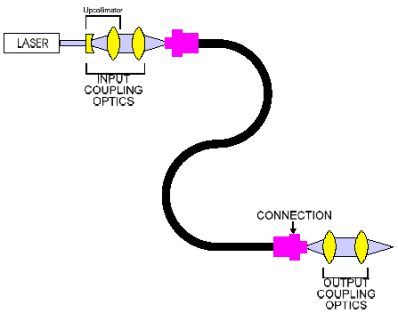

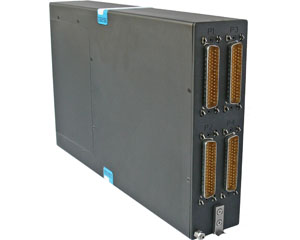 C. O. T. S. = Commercial Off-the-Shelf
C. O. T. S. = Commercial Off-the-Shelf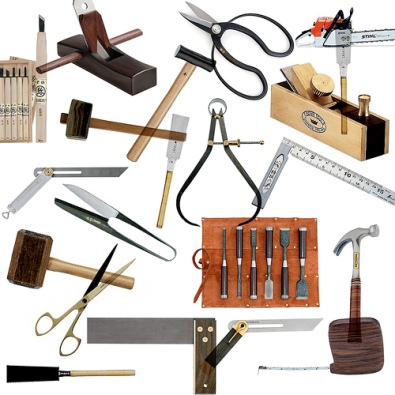
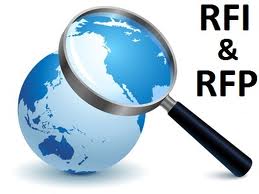
 It is not a secret to anybody that the next new war will be fought (or possibly is being fought) through internet. Previously the U.S. had determined that cyberattacks could be considered an act of war. It was disclosed, that in March one of the leading defense contractors was hacked by a foreign intruder who was able to get away with 24,000 files containing information on the newly developed weapons systems.
It is not a secret to anybody that the next new war will be fought (or possibly is being fought) through internet. Previously the U.S. had determined that cyberattacks could be considered an act of war. It was disclosed, that in March one of the leading defense contractors was hacked by a foreign intruder who was able to get away with 24,000 files containing information on the newly developed weapons systems.  Why? Because to SECURE anything means to CONTROL it. In this case, we are talking about controlling the INTERNET– a worldwide interconnection of computer networks that facilitate the exchange of information among users!
A lot of people out there say that if we can’t control our borders how can we possibly “secure” the internet. Yet others consider the plan to be an intrusion on user’s privacy.
However, if the plan is not put in place here are just a few possible threats we are facing:
Espionage and national security breaches
Sabotage of military operations
Sabotage of the national electrical grid
What do you think? Please comment below…
Why? Because to SECURE anything means to CONTROL it. In this case, we are talking about controlling the INTERNET– a worldwide interconnection of computer networks that facilitate the exchange of information among users!
A lot of people out there say that if we can’t control our borders how can we possibly “secure” the internet. Yet others consider the plan to be an intrusion on user’s privacy.
However, if the plan is not put in place here are just a few possible threats we are facing:
Espionage and national security breaches
Sabotage of military operations
Sabotage of the national electrical grid
What do you think? Please comment below…
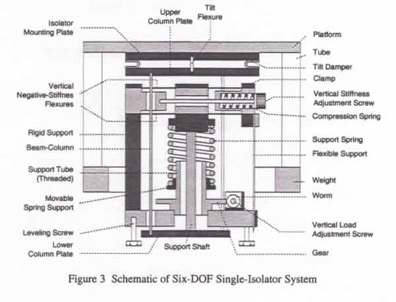
 On March 22, 2011 Scottish Government announced that the world’s largest tidal power project will be built on the Sound Of Islay. The construction will begin in 2012 and is planned to be completed by 2020. The project is expected to cost about $85 million and will be capable of powering 5,000 homes. The facility will have 10 underwater HS100 tidal turbines and produce 10 megawatt. This is the large operation of that nature ever undertaken. The Scottish Government’s goal is to obtain 80% of the energy from renewable sources by 2020. This will put Scotland among the leaders in marine energy.
On March 22, 2011 Scottish Government announced that the world’s largest tidal power project will be built on the Sound Of Islay. The construction will begin in 2012 and is planned to be completed by 2020. The project is expected to cost about $85 million and will be capable of powering 5,000 homes. The facility will have 10 underwater HS100 tidal turbines and produce 10 megawatt. This is the large operation of that nature ever undertaken. The Scottish Government’s goal is to obtain 80% of the energy from renewable sources by 2020. This will put Scotland among the leaders in marine energy.
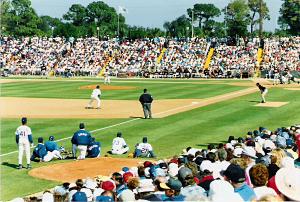

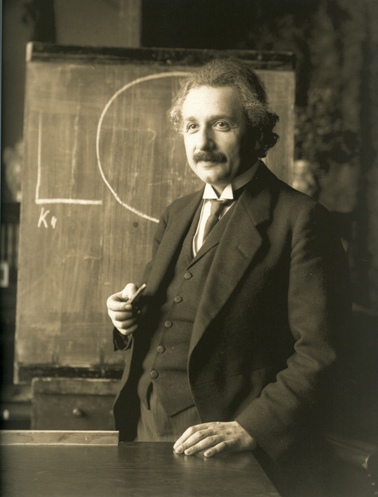

 It looks like a bug equipped with a camera, but the small Ontario Provincial Police unmanned aircraft is making history as one of the first aerial drones being regularly used in North America by law enforcement officials.
The battery-powered craft, which can stay airborne for about 15 minutes at a time, has been used at homicides and other incidents in northwestern Ontario to take aerial photos for use in court.
It has helped reduce costs, too, as the provincial police would have otherwise brought in a helicopter or rented an aircraft. “We’ve saved over $30,000 the 11 times we used it,” says Const. Marc Sharpe, who operates the mini-helicopter.
Aerial drones are usually associated with the military on overseas missions such as in Afghanistan and Iraq.
But the remote-controlled aircraft are also starting to be used by police and firefighters in Europe and by various companies in Australia.
Read more:
It looks like a bug equipped with a camera, but the small Ontario Provincial Police unmanned aircraft is making history as one of the first aerial drones being regularly used in North America by law enforcement officials.
The battery-powered craft, which can stay airborne for about 15 minutes at a time, has been used at homicides and other incidents in northwestern Ontario to take aerial photos for use in court.
It has helped reduce costs, too, as the provincial police would have otherwise brought in a helicopter or rented an aircraft. “We’ve saved over $30,000 the 11 times we used it,” says Const. Marc Sharpe, who operates the mini-helicopter.
Aerial drones are usually associated with the military on overseas missions such as in Afghanistan and Iraq.
But the remote-controlled aircraft are also starting to be used by police and firefighters in Europe and by various companies in Australia.
Read more: